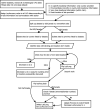p3k14c, a synthetic global database of archaeological radiocarbon dates
- PMID: 35087092
- PMCID: PMC8795199
- DOI: 10.1038/s41597-022-01118-7
p3k14c, a synthetic global database of archaeological radiocarbon dates
Abstract
Archaeologists increasingly use large radiocarbon databases to model prehistoric human demography (also termed paleo-demography). Numerous independent projects, funded over the past decade, have assembled such databases from multiple regions of the world. These data provide unprecedented potential for comparative research on human population ecology and the evolution of social-ecological systems across the Earth. However, these databases have been developed using different sample selection criteria, which has resulted in interoperability issues for global-scale, comparative paleo-demographic research and integration with paleoclimate and paleoenvironmental data. We present a synthetic, global-scale archaeological radiocarbon database composed of 180,070 radiocarbon dates that have been cleaned according to a standardized sample selection criteria. This database increases the reusability of archaeological radiocarbon data and streamlines quality control assessments for various types of paleo-demographic research. As part of an assessment of data quality, we conduct two analyses of sampling bias in the global database at multiple scales. This database is ideal for paleo-demographic research focused on dates-as-data, bayesian modeling, or summed probability distribution methodologies.
© 2022. The Author(s).
Conflict of interest statement
The authors declare no competing interests.
Figures







References
-
- Freeman, J., Byers, D. A., Robinson, E. & Kelly, R. L. Culture process and the interpretation of radiocarbon data. Radiocarbon (2018).
-
- Rick JW. Dates as Data: An Examination of the Peruvian Preceramic Radiocarbon Record. Am. Antiq. 1987;52:55–73.
-
- Berry, M. S. Time, Space, and Transition in Anasazi Prehistory. (University of Utah Press, 1982).
-
- Bird, D. et al. A first empirical analysis of population stability in North America using radiocarbon records. Holocene 0959683620919975 (2020).
Publication types
Grants and funding
LinkOut - more resources
Full Text Sources
Research Materials
Miscellaneous

